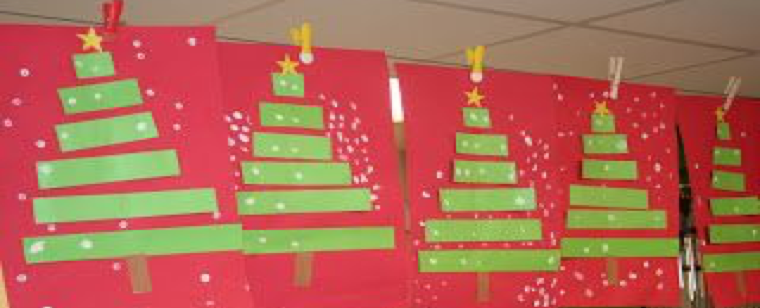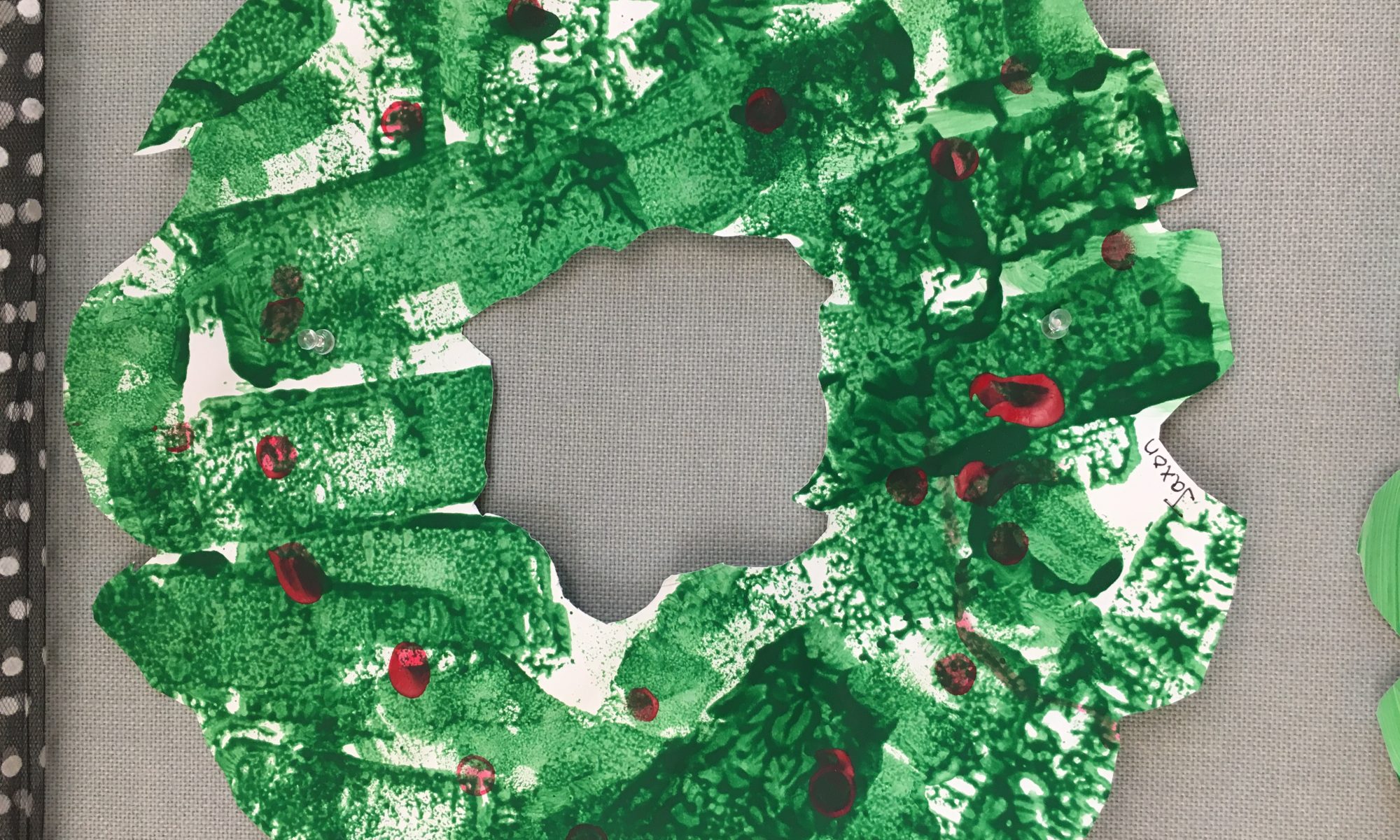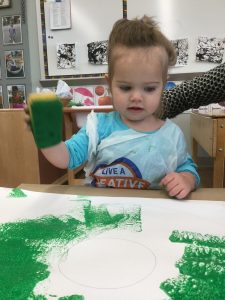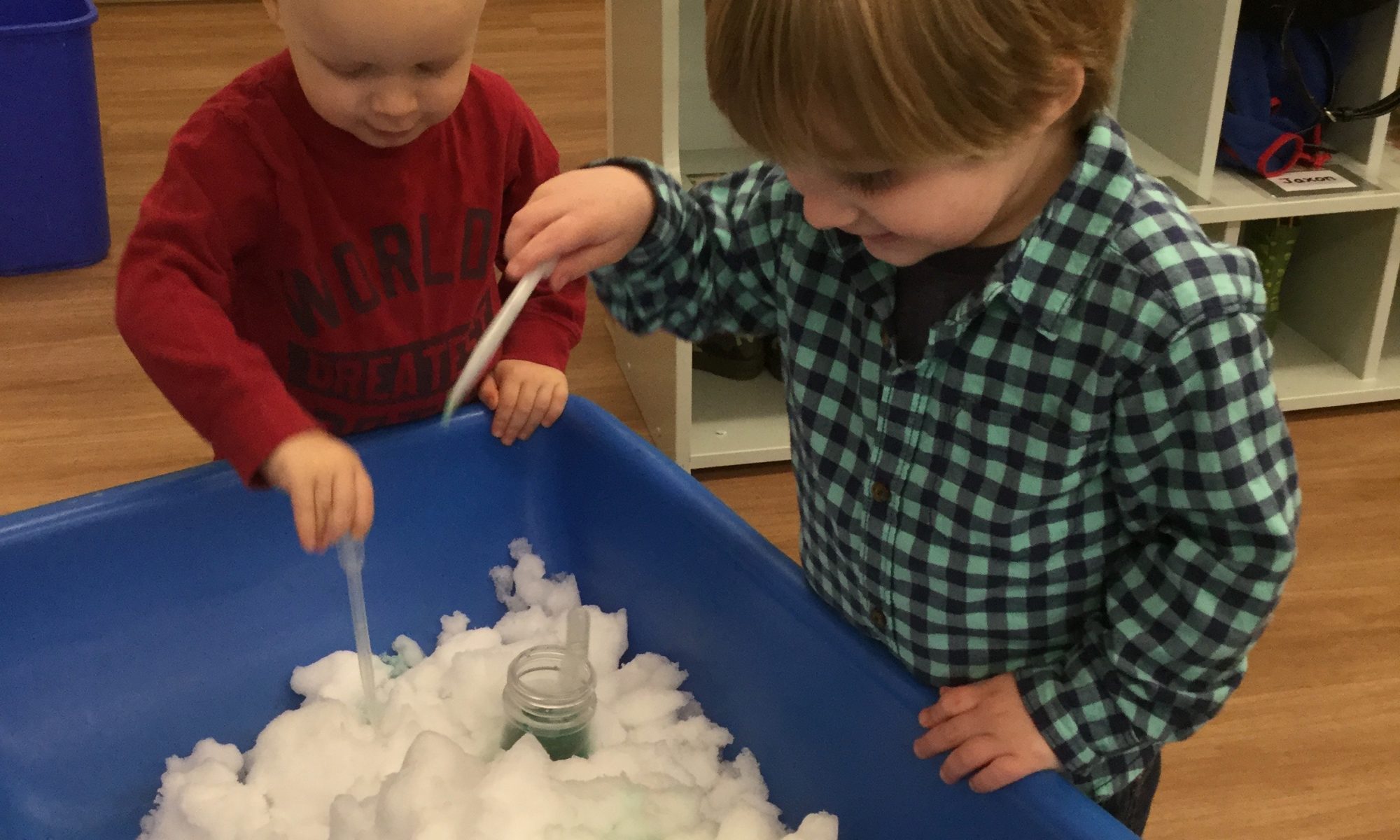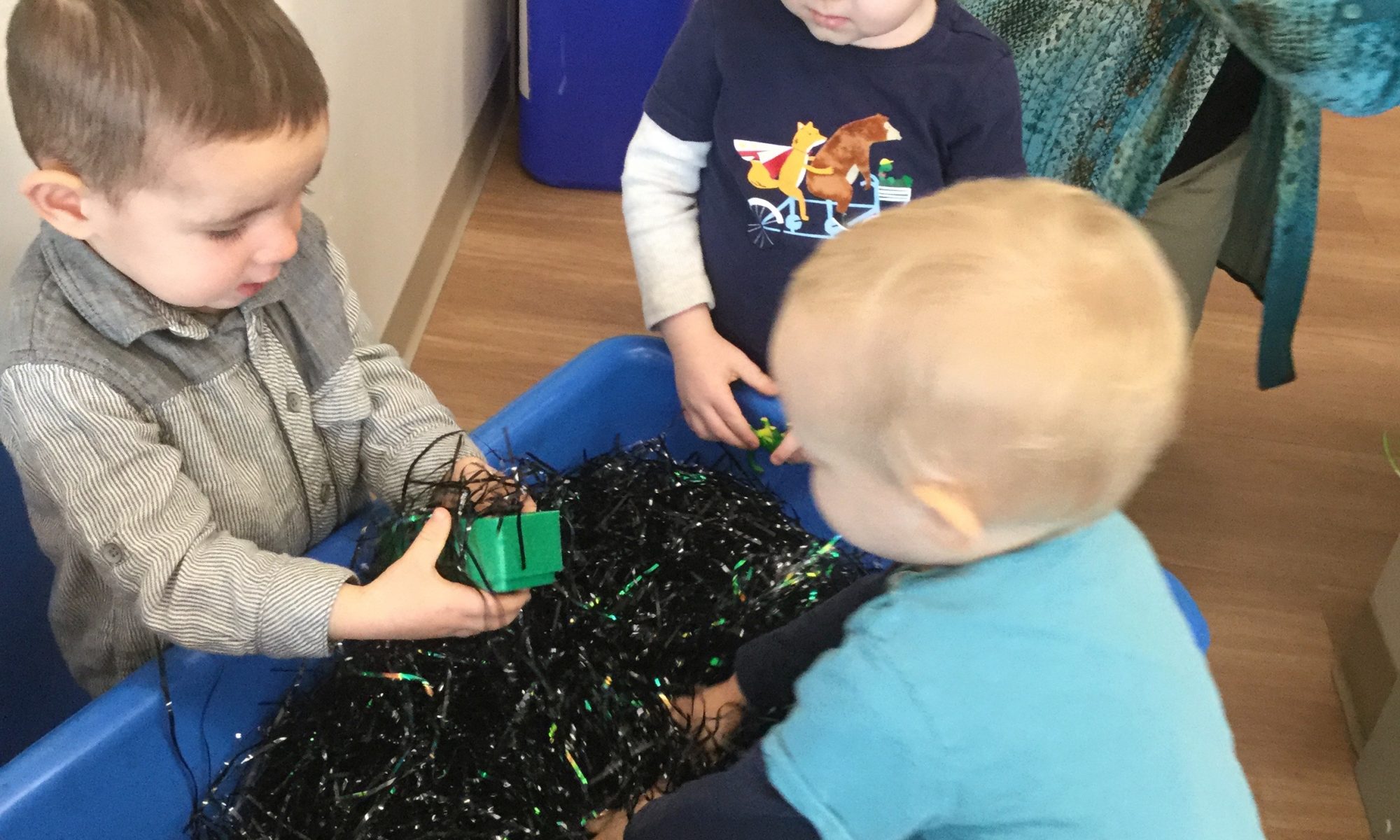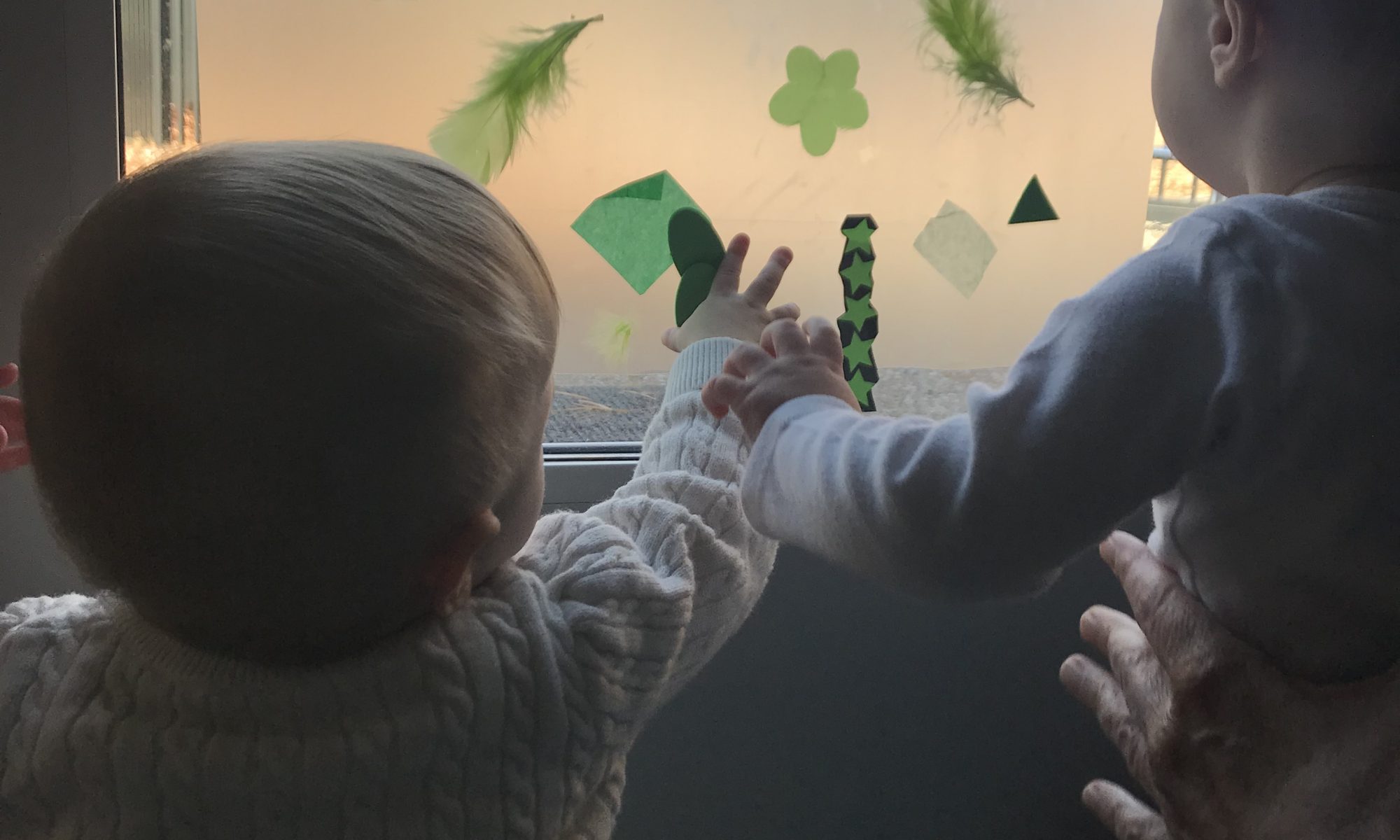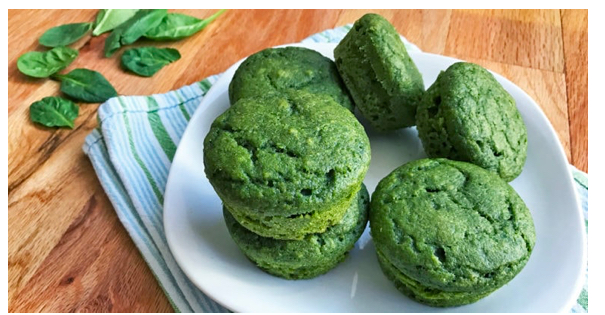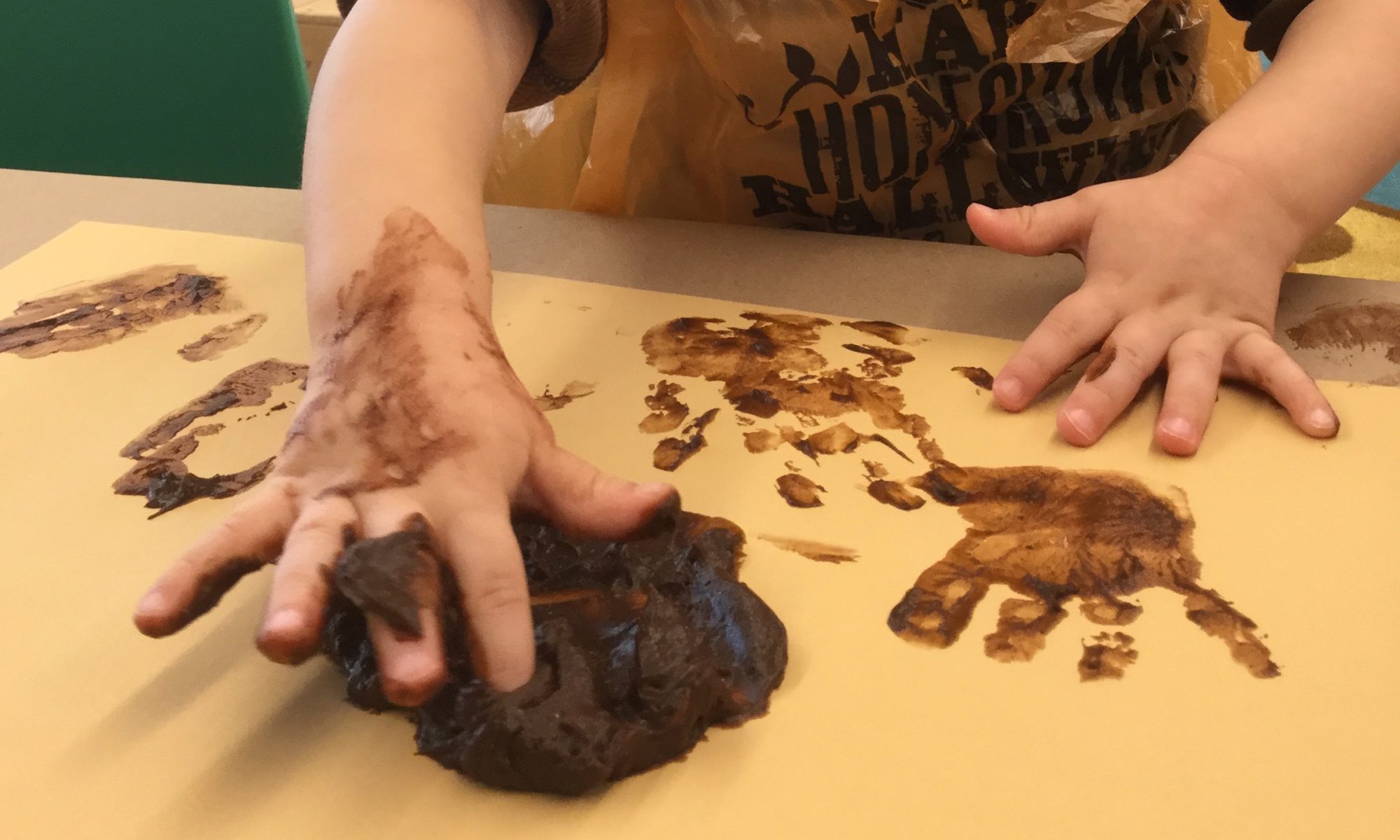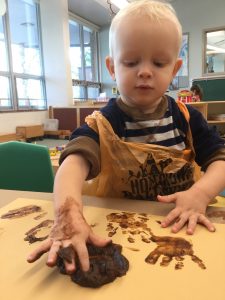Materials
Tall, clear plastic bottle
Christmas table scatters (from Hobby Lobby)
Tray
Rag/washcloth
Water
Directions
Set up a tray with a rag or washcloth, a sturdy, clear plastic bottle filled with about 2 inches of water, and the table scatters. Make sure the opening of your bottle is big enough to easily accommodate the size of the scatters! (A Voss water bottle is a good option.) Invite your child to pick up the scatters individually (practicing his pincer grasp, which is important for a number of fine motor tasks as he gets older) and drop it into the bottle. The water in the bottle deadens the sound of the scatter hitting the bottom of the bottle and also adds a very engaging element to the activity. Young children love water! When your child is finished adding the scatter to the bottle, dump out the water in the sink, and the scatter on the washcloth. Invite your child to make piles of the different pieces. We sorted red Christmas trees, green Christmas trees, little pieces of holly, and red gems. Then refill the water and let your child do the activity again. I can guarantee he’ll want to!


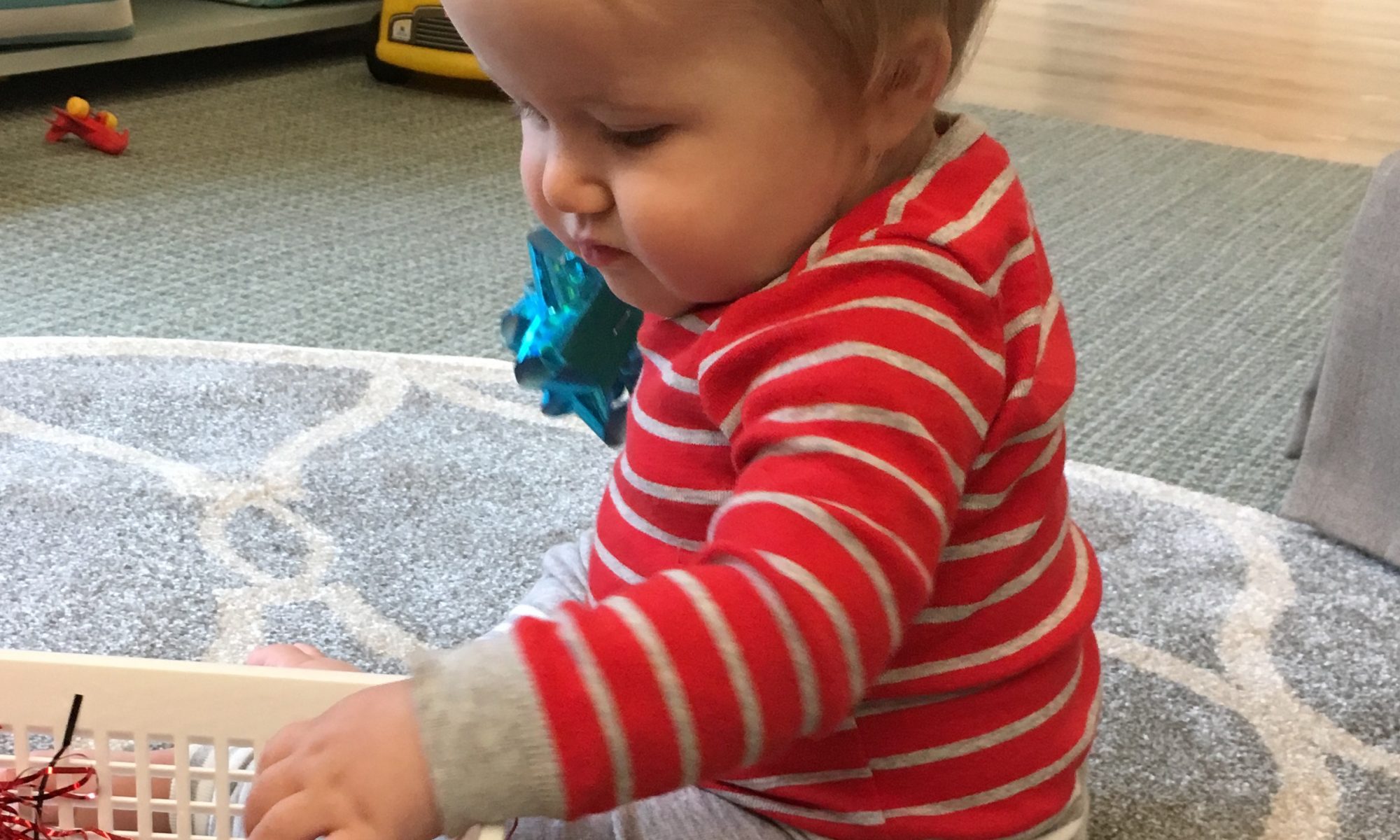
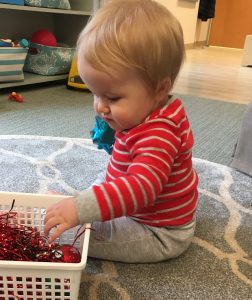 ribbon, bows, evergreen sprigs, Christmas cookie cutters, jingle bells, etc.
ribbon, bows, evergreen sprigs, Christmas cookie cutters, jingle bells, etc.